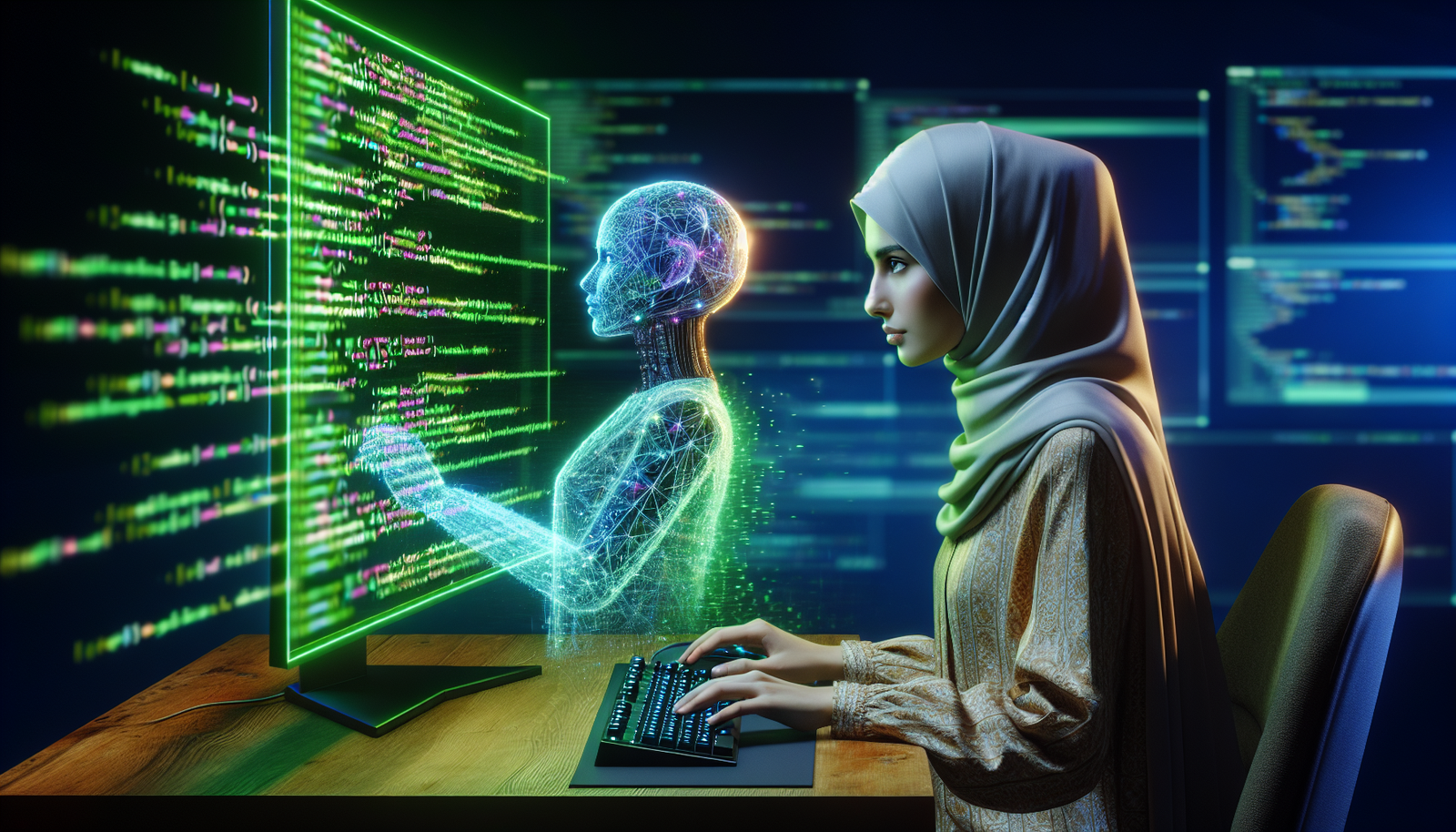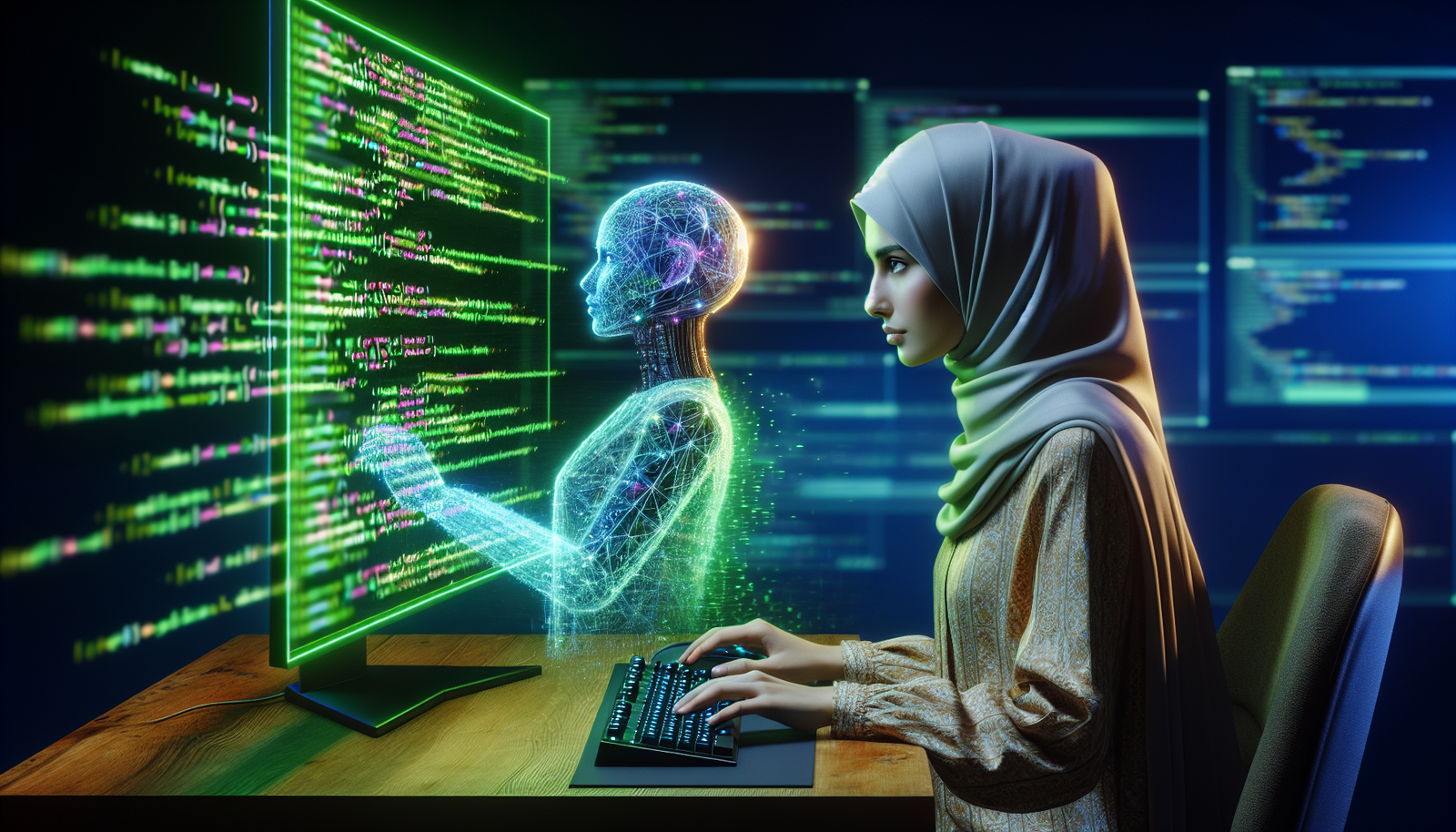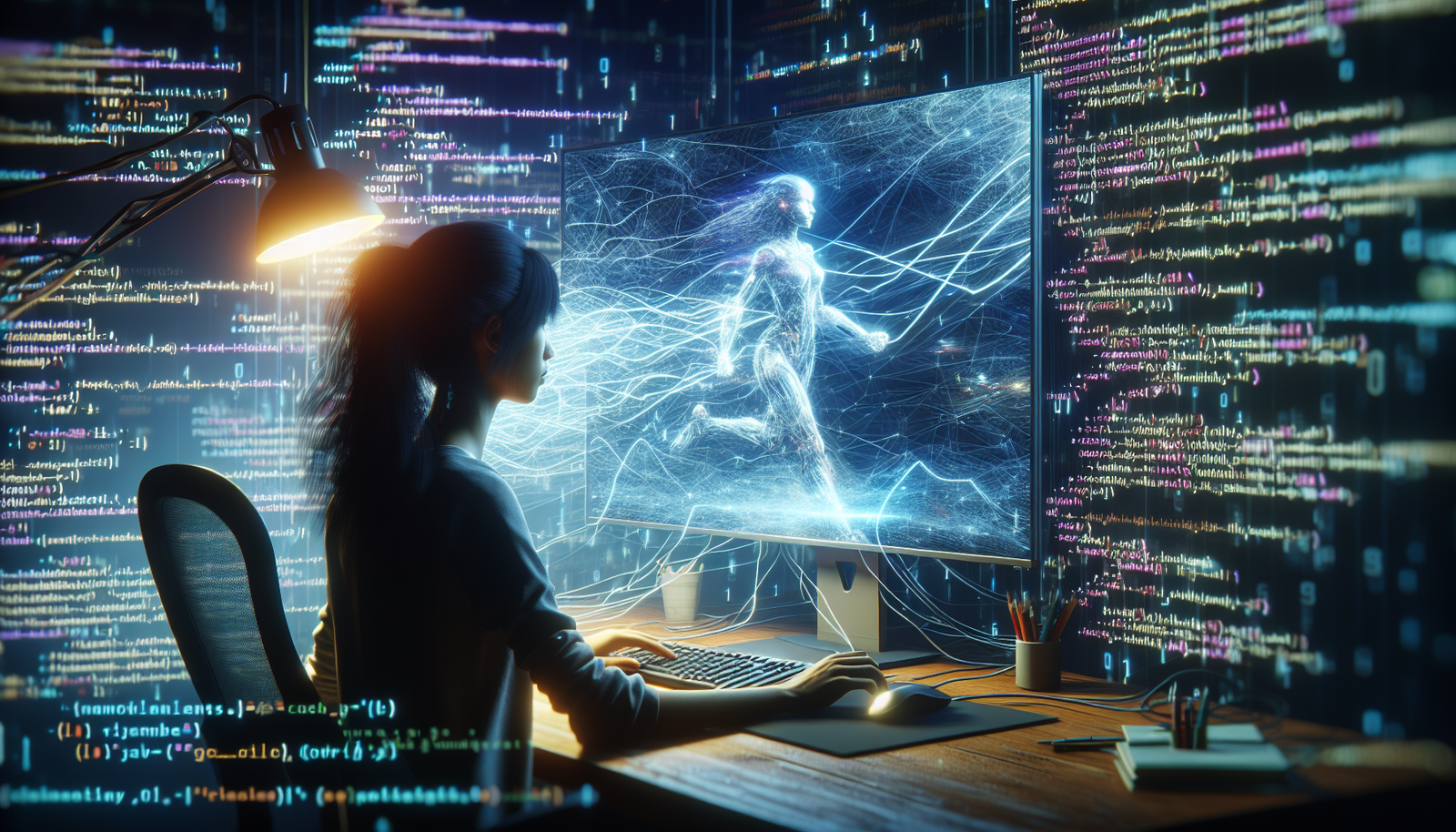
Immerse yourself in the intriguing realm of “The Art of Character AI Programming” as this article guides you through the labyrinth of the latest news, techniques, and developments in the field of character AI. Let’s explore together this cutting-edge sector of technology that continues to revolutionize the world of gaming and digital interactions. This is not just about creating an animated character, but embedding a soul in it using the power of artificial intelligence. Brace yourself for an enlightening journey!
Understanding Character AI
In our ever-advancing world, a realm of technology that has come to interest us much is Artificial Intelligence, AI. One intriguing application of AI is game development, particularly in the creation of character AI, which refers to the intelligence exhibited by characters in video games, simulation, or virtual environments. This intelligence influences how these characters navigate, interact, and behave in these environments.
Definition of Character AI
Character AI, an abbreviation for Character Artificial Intelligence, is a unique technology designed to give digital characters, somewhat human-like characteristics. These artificially intelligent characters can react, interface, and adapt to a variety of situations in a realistic, believable manner. The goal is to create an immersive and engaging experience for the user, enhancing the believability and depth of the character.
Brief History of Character AI
The concept of Character AI isn’t particularly new. It traces its roots back to the early days of video gaming. In the 1970s and 80s, developers started to program simple AI into video games to create adversaries for the player. The ghosts in Pac-Man, for instance, were some of the first AI characters to grace our screens. They used simple rule-based behavior to chase or avoid Pac-man. Since then, the field has developed exponentially, with advancements in computational power, AI research, and programming techniques.
Character AI in Video Games
In modern-day video games, character AI has become more sophisticated, mimicking the complexity of human thought and interaction. Be it enemy soldiers in a shooting game or companions in a role-playing game, AI-controlled characters aim to present a thrilling, engaging, and dynamic gaming experience. They have the capability to form strategies, make intelligent decisions, and even learn from player behavior – all attributes once the exclusive domain of human players.
The Elements of Character AI
Creating a convincing character AI isn’t about mere complexity—it’s about the right combination of different AI elements. Let’s look at these elements now.
Pathfinding Algorithms
Pathfinding is a critical component of character AI. It enables AI characters to navigate from one point to another in the most practical way possible, taking into account the virtual environment’s physical constraints. This involves the use of algorithms, with A* and Dijkstra’s being amongst the most popular.
Character Interactions
Character interaction is another crucial aspect of Character AI. This includes not only interactions with human players but also with other AI-controlled characters. These range from combat mechanics to dialogues and cooperative tasks. To make these interactions believable, AI must comprehend context, goals, and possible actions and outcomes.
Senses and Perception Systems
A significant part of believable AI behavior involves the character’s senses and perception systems. Much like how we humans perceive our environment, AI characters also need to “sense” their virtual world. This could include vision to detect objects and characters, hearing to perceive noises and audio cues, and touch to respond to environmental changes.
State Machines
A State Machine is a conventional model used in character AI to simulate different behaviors. Here, the AI character transitions from one ‘state’ to another based on predefined rules or stimuli. For example, an AI character could transition from a ‘patrolling’ state to an ‘alert’ state, if it spots a player.
Behavior Trees
Behavior trees are another commonly used model in character AI. They offer a visual tool to design complex AI behavior. They are a hierarchical structure, with each node representing a specific action or decision. They provide a higher level of flexibility and control over the character’s behavior.
Role of Mathematics in Character AI
Mathematics plays an essential part in character AI as it does in every other aspect of AI. Various mathematical concepts and theories shape how we build, test, and implement AI systems.
Probability Theory and Statistics
Probability theory and statistics are at the core of many decisions that AIs make. They can predict likely player behavior, adjust their tactics in real-time, and respond accordingly. They also help in modeling the inherent uncertainties in the gaming environments.
Linear Algebra in AI
Linear Algebra, the study of vectors and vector spaces, is indispensable in AI. It comes into play in areas like transformations and translations that determine how a character moves or behaves in its virtual environment.
Reinforcement Learning
In reinforcement learning, an AI learns by interacting with its environment, receiving feedback through ‘rewards’ and ‘punishments’. This approach guides the character AI to learn optimal behaviors through a trial-and-error process.
Behavior Generation in Character AI
How character AI behaves is crucial to creating an engaging gaming environment. The behavior could be predefined, procedurally generated, or a hybrid of the two.
Predefined Behaviors
Predefined behaviors, as the term suggests, are set before the game starts. They dictate how a character will respond in specific situations, such as attacking when an enemy is nearby, fleeing when health is low, et cetera.
Procedurally Generated Behaviors
Procedurally generated behaviors, on the other hand, evolve dynamically in response to the unfolding game. The character AI reacts to stimuli in the gaming environment, altering the behavior as necessary. This approach results in unpredictable and sophisticated behavior making the gaming experience more thrilling.
Hybrid Approaches
At times, a hybrid approach is utilized combining predefined and procedurally generated behaviors. This combination is aimed at enhancing the adaptability and complexity of character behavior while maintaining control over certain aspects.
Role of Machine Learning in Character AI
Machine learning (ML), an evolving field of AI, has been game-changing in the development of character AI. It allows AI characters to learn from experience, enhancing their performance and decision-making abilities.
Supervised Learning
In supervised learning, an AI learns under guidance, much like a student learning under a teacher’s supervision. It involves the AI learning to make predictions from a labelled dataset.
Unsupervised Learning
On the other hand, in unsupervised learning, AI learns without any guidance or labels, determining structures and patterns within the data on its own. This kind of learning is often used to make AI characters more adaptive, capable of reacting to unpredictable situations.
Reinforcement Learning
Reinforcement learning involves an AI learning from reward-based feedback. It’s shaped to maximize positive feedback while reducing negative feedback.
Deep Learning
Deep learning, a subset of ML, employs artificial neural networks to enable an AI to learn from vast amounts of unstructured data. This has been pivotal in recognizing patterns, learning player preferences, and fine-tuning strategies to enhance game immersion.
Considering Characters’ Emotions and Personality
To create more immersive gaming experiences, developers have started to consider modeling emotions and personality traits into their AI characters.
Modeling Personality Traits
In modeling personality traits, we give AI characters distinctive personality traits such as aggressiveness or curiosity. This allows them to display different behaviors, making each character unique and engaging.
Emotion-driven Behavior
In emotion-driven behavior, we simulate emotional responses in AI characters. These responses trigger different behaviors in different emotional states, thereby increasing the complexity and diversity of their interactions.
Social and Interactive Aspects
Additionally, accounting for social and interactive aspects means that AI characters can understand social dynamics and adapt their behaviors to fit into the social context.
Testing and Evaluating Character AI
To ensure Character AI functions as intended, we need to undergo a series of testing and evaluation processes. Each type of testing targets different aspects of the AI, from its technical functionality to how well it fulfills its intended purpose.
Unit Testing AI
In unit testing, individual components of the AI are tested in isolation to ensure each functions as expected. This includes various subroutines and algorithms that make up the AI system.
Functional Testing
Functional testing, on the other hand, ensures that the complete AI system operates according to specifications. This usually involves testing the AI in the game or virtual simulation environment.
Load Testing
Load testing gauges the AI’s performance under heavy workload and high user traffic. It’s essential to ensure that the AI behaves correctly and does not impact the performance of the game negatively, even under extreme conditions.
Performance Testing
Performance testing checks aspects such as the speed, responsiveness, and stability of the AI under different workloads. It also monitors associated parameters, like system resource usage.
User Acceptance Testing
Finally, user acceptance testing seeks feedback from the end-users. The primary objective is to determine whether the AI meets user expectations and ensures an engaging and enjoyable gaming experience.
Challenges in Character AI Programming
Despite the advancements in technology, programming character AI is not devoid of challenges. Here’s a look at some of the pressing issues we are currently grappling with.
Creating Believable Characters
The creation of believable characters is a complex task, one that requires not only technical prowess but also artistic aptitude. Striking the right balance between character behavior complexity and believability of interactions can be challenging.
Ensuring Consistent Performance
Safeguarding consistent performance of AI is another significant challenge. As game scenarios grow increasingly complex, maintaining a smooth performance of the AI without resource overloads is important.
Dealing with Complexity
The complexity of character AI systems can be overwhelming. Keeping these systems organized while continually expanding and upgrading them could be quite a task.
Creating Adaptive AI
Creating truly adaptive AI is an ongoing challenge. Although we’ve made significant strides in teaching machines to learn, creating AI that can understand and adapt to ever-changing game environments remains a daunting hurdle to cross.
Future Trends in Character AI
The realm of character AI is always evolving. Let’s look at what the future holds for us.
Influence of Artificial General Intelligence
The rise of artificial general intelligence, where machines can understand and learn any intellectual task that humans can do, may radically change the nature of character AI. We can expect more sophisticated AIs that can understand context in-depth and adapt to evolving game environments.
Evolution of Procedural Animation
As procedural animation—animation that is generated algorithmically—continues to evolve, we expect to see much more realistic character motions and reactions in future gaming experiences.
Real-Time Learning and Adaptation
The ability for AI characters to learn and adapt in real-time will likely play a significant role in future gaming experiences. Real-time learning could lead to more unpredictable and exciting AI behavior, making Gameplay that much more robust.
Increased Player Interaction
The future of Character AI may also see increased interaction with players. AI could learn more about individual player’s preferences and adapt the gameplay accordingly for a personalized gaming experience.
Practical Applications of Character AI
The relevance of character AI extends beyond video games. Let’s see how.
In Gaming Industry
As we’ve been discussing, in the gaming industry, character AI is becoming paramount. It enhances the gaming experience, providing interactive, fresh, and engaging content.
In Film and Entertainment
In the film and entertainment industry, Character AI could redefine the way stories are told and experienced. With AI-powered characters, viewers could potentially interact with the storyline, leading to immersive and personalized entertainment experiences.
In Virtual Reality
Virtual Reality (VR) environments provided with character AI can create more realistic, interactive experiences. Applications could range from virtual tours to immersive training environments.
In Training and Simulation
Training simulations could also greatly benefit from character AI. These include medical training simulations, flight simulators, or emergency response training, where AI characters can simulate real-life reactions, enhancing the training quality.
In conclusion, Character AI is a field filled with potential and excitement. Through continuous advancements, we are striving to create more complex, lifelike, and engaging AI characters, shaping gaming and simulation experiences like never before. Through every challenge and success, we continue our journey towards unravelling the art of Character AI programming.









Leave a Reply